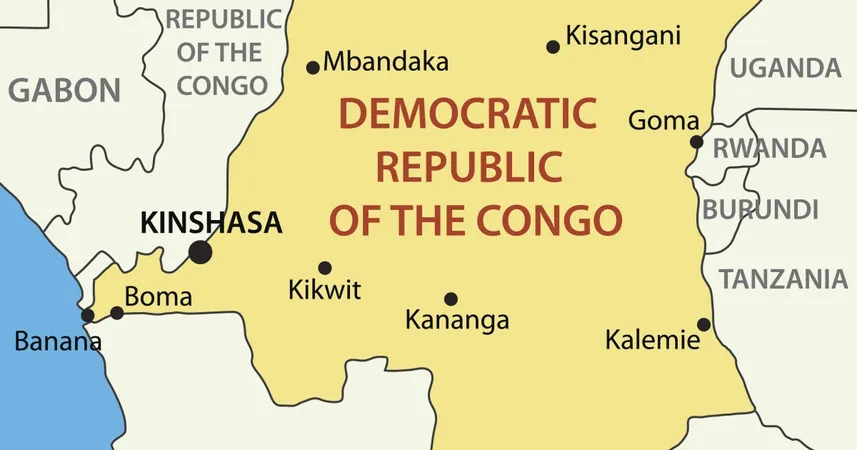
What Was 'Disease X' and What Can We Learn from it?
2024-12-31
Author: Benjamin
Overview of Disease X
In early December, the international community was alerted to a mysterious illness that had emerged in a remote area of the Democratic Republic of Congo (DRC). Dubbed 'Disease X' by the Africa Centers for Disease Control and Prevention, this potential health crisis prompted swift action from national and international health experts.
Outbreak Details
The location, situated in the Panzi district of Kwango Province, had experienced a troubling surge of illnesses—with around 900 individuals falling sick between late October and mid-December. Symptoms ranged from fever and body weakness to serious respiratory issues, leading to 48 tragic fatalities, many of which involved vulnerable young children. Local healthcare workers, alarmed by the situation, notified national authorities as they grappled with the unknown cause of the outbreak.
Response Efforts
Upon arrival, medical teams sought to collect samples from the afflicted to be taken to the provincial capital of Kenge and the national capital, Kinshasa, for diagnostic testing. However, the difficult journey, exacerbated by the rainy season and poor road conditions, led to significant degradation of the samples. Dr. Jean Kaseya, director general of the Africa CDC, lamented that the samples were 'poorly preserved,' hindering proper analysis.
Identification of the Cause
After a lengthy investigation spanning weeks, the World Health Organization (WHO) revealed on December 27 that they had identified the cause of the outbreak from 430 samples. The results pointed to a combination of familiar foes: acute respiratory infections—similar to COVID-19, flu, or rhinoviruses—complicated by malaria and exacerbated by alarmingly high levels of malnutrition in the population.
Lessons Learned
Dr. William Moss, deputy director of the Johns Hopkins Malaria Research Institute, emphasized the crucial lesson from this outbreak: strengthening primary healthcare systems is essential. He highlighted that areas with robust healthcare infrastructures are better positioned to manage both preventative and responsive care during such crises. In the DRC, approximately 40% of the local population suffers from malnutrition, which severely weakens their immune systems and heightens the risk of severe disease from infections.
Nature of Outbreaks
Another critical point raised by health experts revolves around the nature of such outbreaks. They noted that unusual manifestations of common diseases may occur more frequently than true novel infectious diseases. Indeed, Michael Osterholm from the University of Minnesota stated that mysterious outbreaks resembling 'Diseases X' are reported several times a year worldwide, with most cases ultimately linked to well-known pathogens.
Importance of Vigilance
However, vigilance remains vital. Swift identification and response to truly novel pathogens can help prevent wide-scale outbreaks, similar to what transpired with COVID-19. The slow initial response in this instance underscores the challenges faced in investigating health crises in remote regions.
Conclusion
As we reflect on the lessons learned from the 'Disease X' incident in the DRC, it is clear that enhancing healthcare systems, particularly in vulnerable regions, and maintaining cautious awareness of emerging health threats are essential steps toward safeguarding public health in the future.









 Brasil (PT)
Brasil (PT)
 Canada (EN)
Canada (EN)
 Chile (ES)
Chile (ES)
 Česko (CS)
Česko (CS)
 대한민국 (KO)
대한민국 (KO)
 España (ES)
España (ES)
 France (FR)
France (FR)
 Hong Kong (EN)
Hong Kong (EN)
 Italia (IT)
Italia (IT)
 日本 (JA)
日本 (JA)
 Magyarország (HU)
Magyarország (HU)
 Norge (NO)
Norge (NO)
 Polska (PL)
Polska (PL)
 Schweiz (DE)
Schweiz (DE)
 Singapore (EN)
Singapore (EN)
 Sverige (SV)
Sverige (SV)
 Suomi (FI)
Suomi (FI)
 Türkiye (TR)
Türkiye (TR)